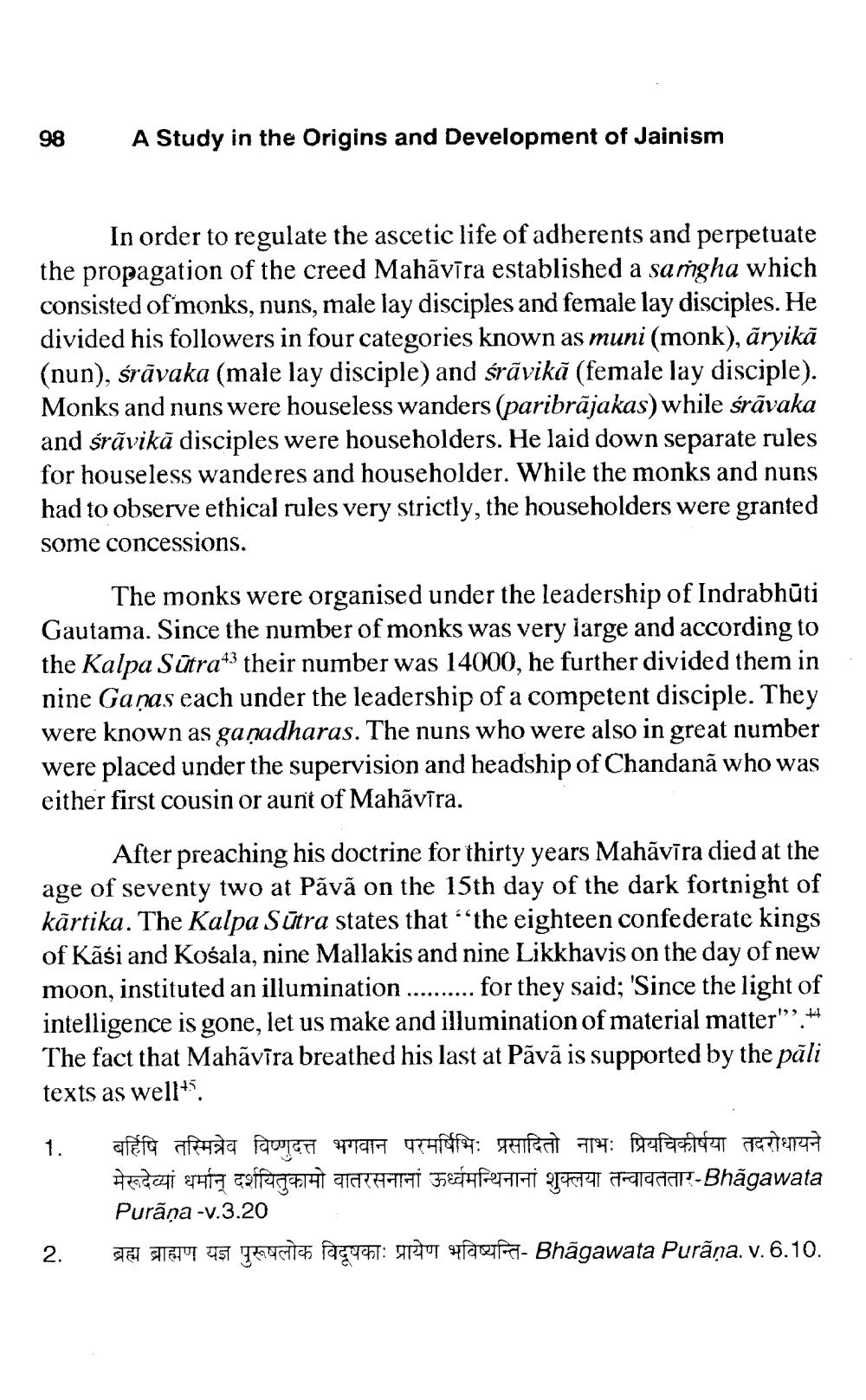________________
98
A Study in the Origins and Development of Jainism
In order to regulate the ascetic life of adherents and perpetuate the propagation of the creed Mahāvīra established a saṁgha which consisted of monks, nuns, male lay disciples and female lay disciples. He divided his followers in four categories known as muni (monk), ãryikā (nun), śrāvaka (male lay disciple) and śrāvikā (female lay disciple). Monks and nuns were houseless wanders (paribrājakas) while śrāvaka and śrăvikā disciples were householders. He laid down separate rules for houseless wanderes and householder. While the monks and nuns had to observe ethical rules very strictly, the householders were granted some concessions.
The monks were organised under the leadership of Indrabhūti Gautama. Since the number of monks was very large and according to the Kalpa Sūtra43 their number was 14000, he further divided them in nine Gaņas each under the leadership of a competent disciple. They were known as ga nadharas. The nuns who were also in great number were placed under the supervision and headship of Chandanã who was either first cousin or aunt of Mahāvīra.
After preaching his doctrine for thirty years Mahāvīra died at the age of seventy two at Pãvã on the 15th day of the dark fortnight of kārtika. The Kalpa Sūtra states that the eighteen confederate kings of Kāśi and Košala, nine Mallakis and nine Likkhavis on the day of new moon, instituted an illumination .......... for they said; 'Since the light of intelligence is gone, let us make and illumination of material matter"? + The fact that Mahāvīra breathed his last at Pāvā is supported by the păli texts as well".
बर्हिषि तस्मिन्नेव विष्णुदत्त भगवान परमर्षिभिः प्रसादितो नाभः प्रियचिकीर्षया तदरोधायने Headli ent taffetal ATARATAT Secupei capell falladar-Bhagawata Purāņa -v.3.20 HJEMU 45 Tahuntes fagsychat: up to fefe Bhagawata Purāņa. v. 6.10.
2.




